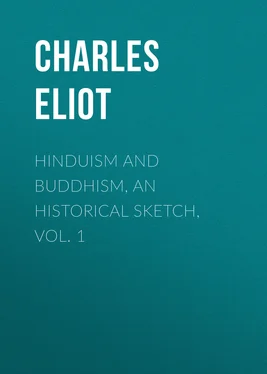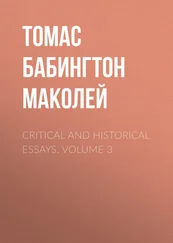Charles Eliot - Hinduism and Buddhism, An Historical Sketch, Vol. 1
Здесь есть возможность читать онлайн «Charles Eliot - Hinduism and Buddhism, An Historical Sketch, Vol. 1» — ознакомительный отрывок электронной книги совершенно бесплатно, а после прочтения отрывка купить полную версию. В некоторых случаях можно слушать аудио, скачать через торрент в формате fb2 и присутствует краткое содержание. Жанр: foreign_religion, Философия, Религиозная литература, foreign_psychology, foreign_antique, foreign_prose, на английском языке. Описание произведения, (предисловие) а так же отзывы посетителей доступны на портале библиотеки ЛибКат.
- Название:Hinduism and Buddhism, An Historical Sketch, Vol. 1
- Автор:
- Жанр:
- Год:неизвестен
- ISBN:нет данных
- Рейтинг книги:5 / 5. Голосов: 1
-
Избранное:Добавить в избранное
- Отзывы:
-
Ваша оценка:
- 100
- 1
- 2
- 3
- 4
- 5
Hinduism and Buddhism, An Historical Sketch, Vol. 1: краткое содержание, описание и аннотация
Предлагаем к чтению аннотацию, описание, краткое содержание или предисловие (зависит от того, что написал сам автор книги «Hinduism and Buddhism, An Historical Sketch, Vol. 1»). Если вы не нашли необходимую информацию о книге — напишите в комментариях, мы постараемся отыскать её.
Hinduism and Buddhism, An Historical Sketch, Vol. 1 — читать онлайн ознакомительный отрывок
Ниже представлен текст книги, разбитый по страницам. Система сохранения места последней прочитанной страницы, позволяет с удобством читать онлайн бесплатно книгу «Hinduism and Buddhism, An Historical Sketch, Vol. 1», без необходимости каждый раз заново искать на чём Вы остановились. Поставьте закладку, и сможете в любой момент перейти на страницу, на которой закончили чтение.
Интервал:
Закладка:
In Buddhist literature the composite and tertiary character of the Sutta Pitaka is equally plain. The various Nikayas are confessedly collections of discourses. The two older ones seem dominated by the desire to bring before the reader the image of the Buddha preaching: the Samyutta and Anguttara emphasize the doctrine rather than the teacher and arrange much the same matter under new headings. But it is clear that in whatever form the various sermons, dialogues and dissertations appear, that form is not primary but presupposes compilers dealing with an oral tradition already stereotyped in language. For long passages such as the tract on morality and the description of progress in the religious life occur in several discourses and the amount of matter common to different Suttas and Nikayas is surprising. Thus nearly the whole of the long Sutta describing the Buddha's last days and death 64 64 Mahâparinibbâna sutta. See the table of parallel passages prefixed to Rhys Davids's translation, Dialogues of the Buddha , II. 72.
, which at first sight seems to be a connected narrative somewhat different from other Suttas, is found scattered in other parts of the Canon.
Thus our oldest texts whether Brahmanic or Buddhist are editions and codifications, perhaps amplifications, of a considerably older oral teaching. They cannot be treated as personal documents similar to the Koran or the Epistles of Paul.
The works of middle antiquity such as the Epics, Puranas, and Mahayanist sutras were also not produced by one author. Many of them exist in more than one recension and they usually consist of a nucleus enveloped and sometimes itself affected by additions which may exceed the original matter in bulk. The Mahâbhârata and Prajñâpâramitâ are not books in the European sense: we cannot give a date or a table of contents for the first edition 65 65 Much the same is true of the various editions of the Vinaya and the Mahâvastu. These texts were produced by a process first of collection and then of amplification.
: they each represent a body of literature whose composition extended over a long period. As time goes on, history naturally grows clearer and literary personalities become more distinct, yet the later Puranas are not attributed to human authors and were susceptible of interpolation even in recent times. Thus the story of Genesis has been incorporated in the Bhavishya Purana, apparently after Protestant missionaries had begun to preach in India.
The other point to which I would draw attention is the importance of relatively modern works, which supersede the older scriptures, especially in Hinduism. This phenomenon is common in many countries, for only a few books such as the Bhagavad-gîtâ, the Gospels and the sayings of Confucius have a portion of the eternal and universal sufficient to outlast the wear and tear of a thousand years. Vedic literature is far from being discredited in India, though some Tantras say openly that it is useless. It still has a place in ritual and is appealed to by reforming sects. But to see Hinduism in proper perspective we must remember that from the time of the Buddha till now, the composition of religious literature in India has been almost uninterrupted and that almost every century has produced works accepted by some sect as infallible scripture. For most Vishnuites the Bhagavad-gîtâ is the beginning of sacred literature and the Nârâyaṇîya 66 66 The latter part of Mahâbhârata XII.
is also held in high esteem: the philosophy of each sect is usually determined by a commentary on the Brahma Sutras: the Bhagavata Purana (perhaps in a vernacular paraphrase) and the Ramayana of Tulsi Das are probably the favourite reading of the laity and for devotional purposes may be supplemented by a collection of hymns such as the Namghosha, copies of which actually receive homage in Assam. The average man—even the average priest—regards all these as sacred works without troubling himself with distinctions as to śruti and smṛiti , and the Vedas and Upanishads are hardly within his horizon.
In respect of sacred literature Buddhism is more conservative than Hinduism, or to put it another way, has been less productive in the last fifteen hundred years. The Hinayanists are like those Protestant sects which still profess not to go beyond the Bible. The monks read the Abhidhamma and the laity the Suttas, though perhaps both are disposed to use extracts and compendiums rather than the full ancient texts. Among the Mahayanists the ancient Vinaya and Nikayas exist only as literary curiosities. The former is superseded by modern manuals, the latter by Mahayanist Sutras such as the Lotus and the Happy Land, which are however of respectable antiquity. As in India, each sect selects rather arbitrarily a few books for its own use, without condemning others but also without according to them the formal recognition received by the Old and New Testaments among Christians.
No Asiatic country possesses so large a portion of the critical spirit as China. The educated Chinese, however much they may venerate their classics, think of them as we think of the masterpieces of Greek literature, aS texts which may contain wrong readings, interpolations and lacunae, which owe whatever authority they possess to the labours of the scholars who collected, arranged and corrected them. This attitude is to some extent the result of the attempt made by the First Emperor about 200 B.C. to destroy the classical literature and to its subsequent laborious restoration. At a time when the Indians regarded the Veda as a verbal revelation, certain and divine in every syllable, the Chinese were painfully recovering and re-piecing their ancient chronicles and poems from imperfect manuscripts and fallible memories. The process obliged them to enquire at every step whether the texts which they examined were genuine and complete: to admit that they might be defective or paraphrases of a difficult original. Hence the Chinese have sound principles of criticism unknown to the Hindus and in discussing the date of an ancient work or the probability of an alleged historical event they generally use arguments which a European scholar can accept.
Chinese literature has a strong ethical and political flavour which tempered the extravagance of imported Indian ideas. Most Chinese systems assert more or less plainly that right conduct is conduct in harmony with the laws of the State and the Universe.
18. Morality and Will
It is dangerous to make sweeping statements about the huge mass of Indian literature, but I think that most Buddhist and Brahmanic systems assume that morality is merely a means of obtaining happiness 67 67 Though European religions emphasize man's duty to God, they do not exclude the pursuit of happiness: e.g. Westminster Shorter Catechism (1647). Question 1, "What is the chief end of man? A. Man's chief end is to glorify God and to enjoy him for ever."
and is not obedience to a categorical imperative or to the will of God. Morality is by inference raised to the status of a cosmic law, because evil deeds will infallibly bring evil consequences to the doer in this life or in another. But it is not commonly spoken of as such a law. The usual point of view is that man desires happiness and for this morality is a necessary though insufficient preparation. But there may be higher states which cannot be expressed in terms of happiness.
The will receives more attention in European philosophy than in Indian, whether Buddhist or Brahmanic, which both regard it not as a separate kind of activity but as a form of thought. As such it is not neglected in Buddhist psychology: will, desire and struggle are recognized as good provided their object is good, a point overlooked by those who accuse Buddhism of preaching inaction 68 68 Mrs Rhys Davids has brought out the importance of the will for Buddhist ethics in several works. See J.R.A.S. 1898, p. 47 and Buddhism , pp. 221 ff. See also Maj. Nik. 19 for a good example of Buddhist views as to the necessity and method of cultivating the will.
.
Интервал:
Закладка:
Похожие книги на «Hinduism and Buddhism, An Historical Sketch, Vol. 1»
Представляем Вашему вниманию похожие книги на «Hinduism and Buddhism, An Historical Sketch, Vol. 1» списком для выбора. Мы отобрали схожую по названию и смыслу литературу в надежде предоставить читателям больше вариантов отыскать новые, интересные, ещё непрочитанные произведения.
Обсуждение, отзывы о книге «Hinduism and Buddhism, An Historical Sketch, Vol. 1» и просто собственные мнения читателей. Оставьте ваши комментарии, напишите, что Вы думаете о произведении, его смысле или главных героях. Укажите что конкретно понравилось, а что нет, и почему Вы так считаете.












